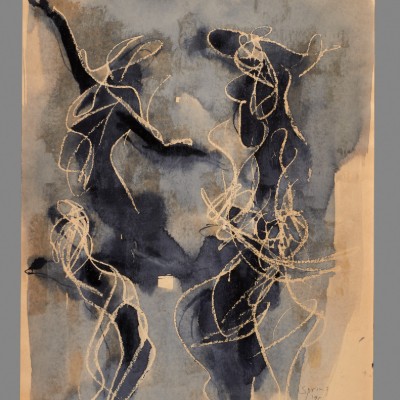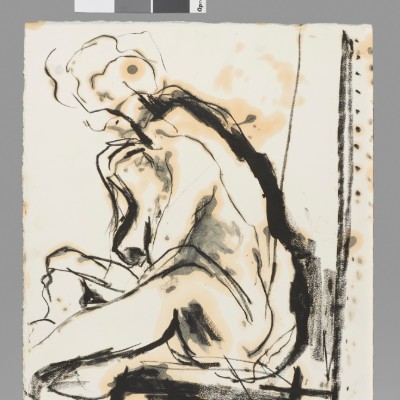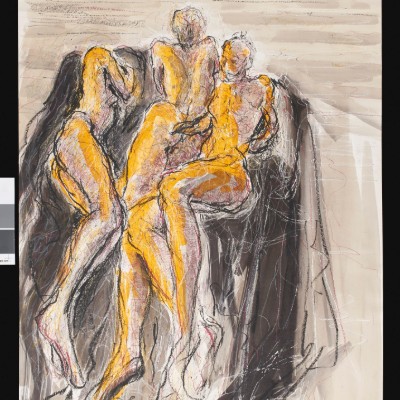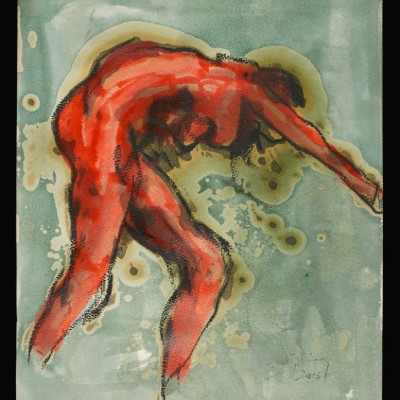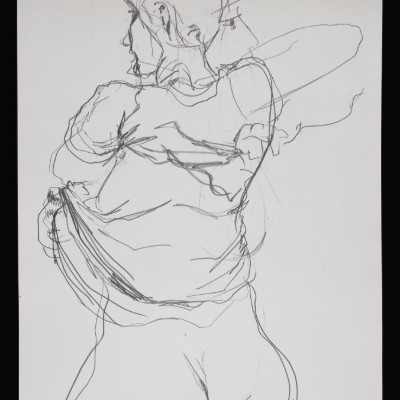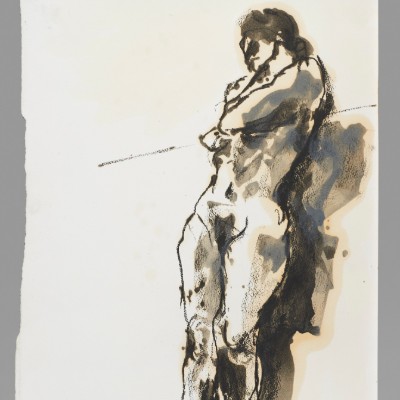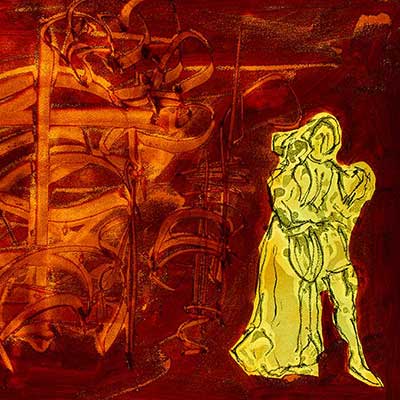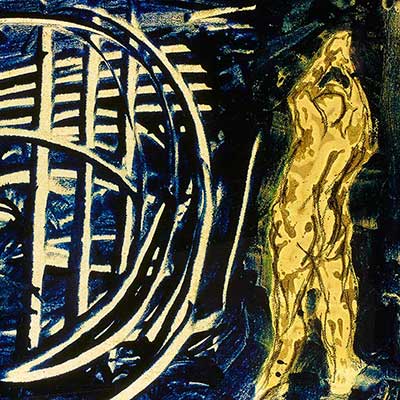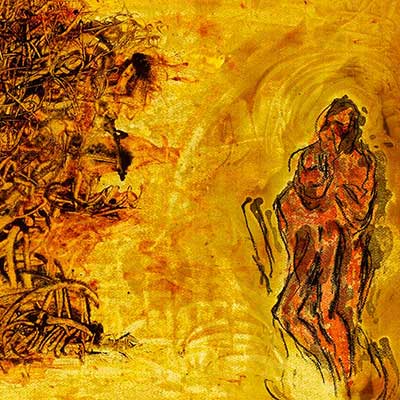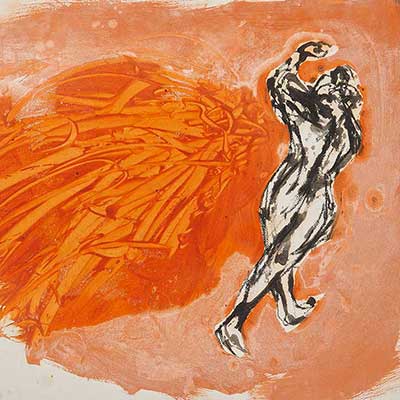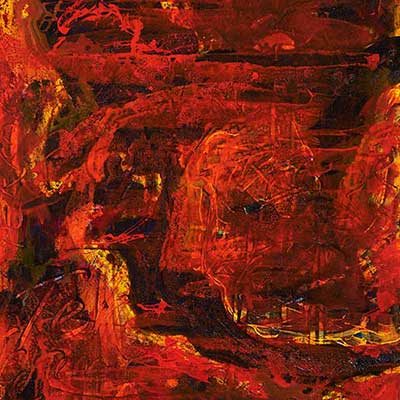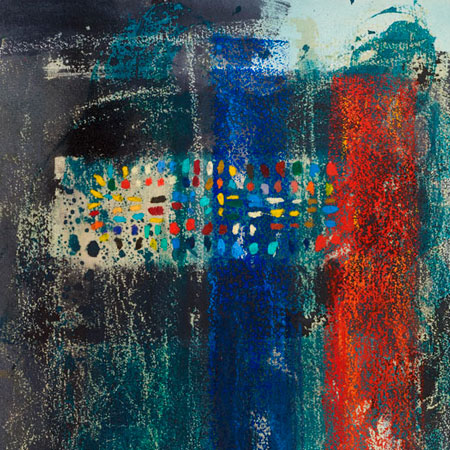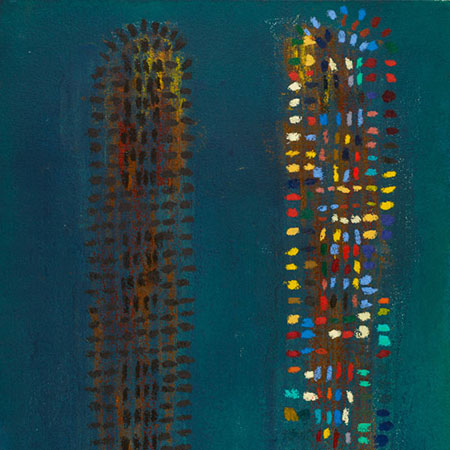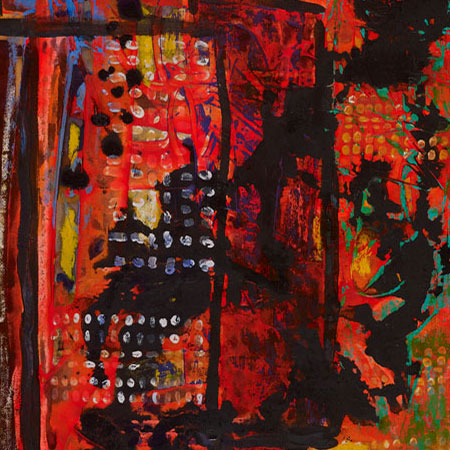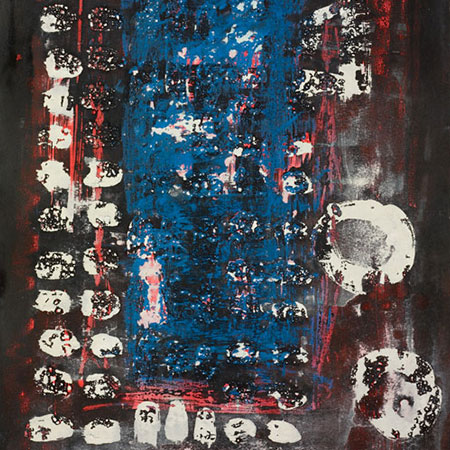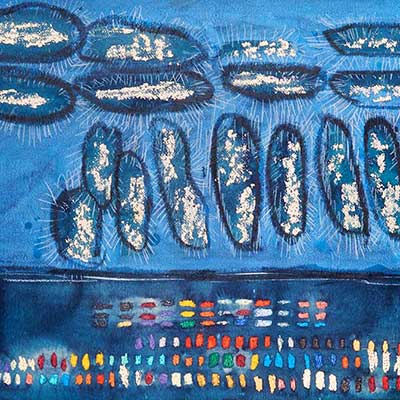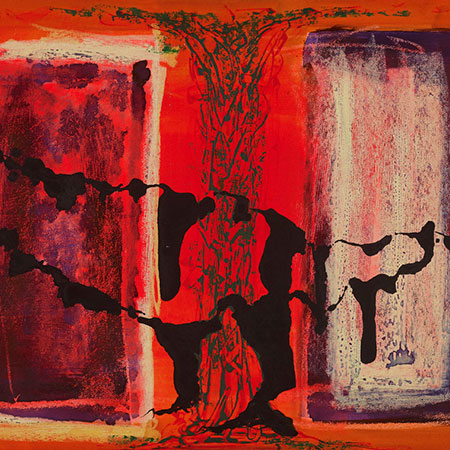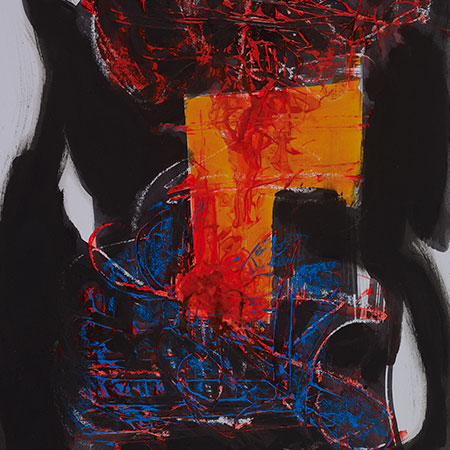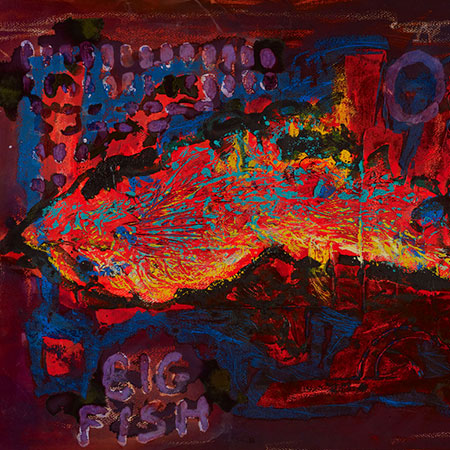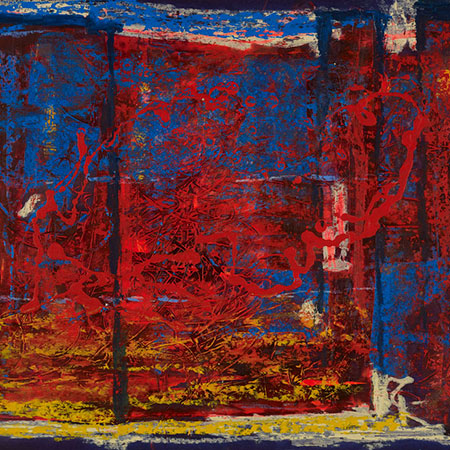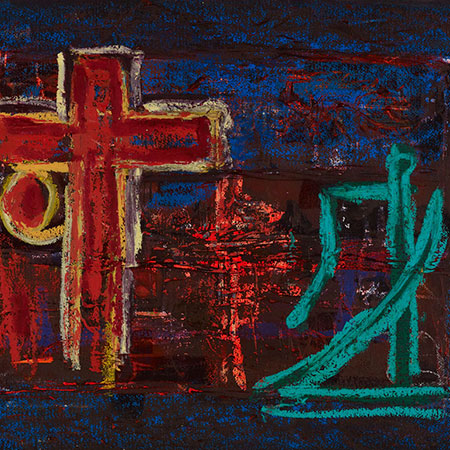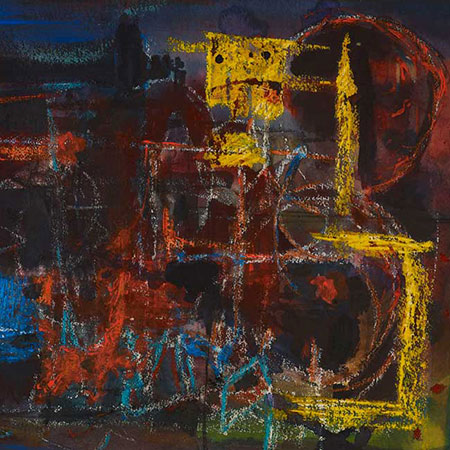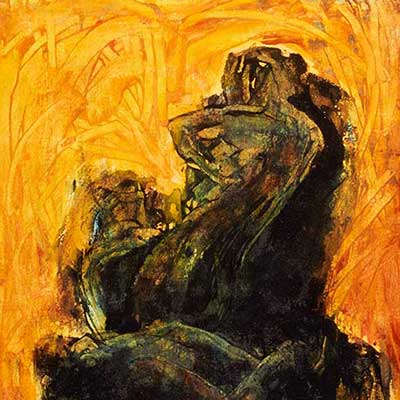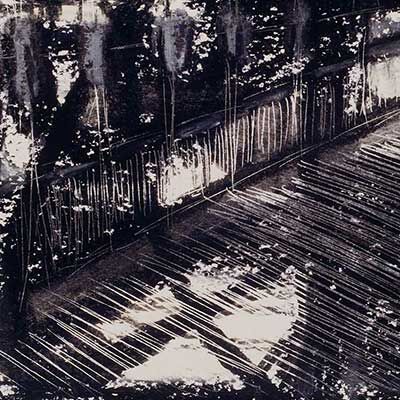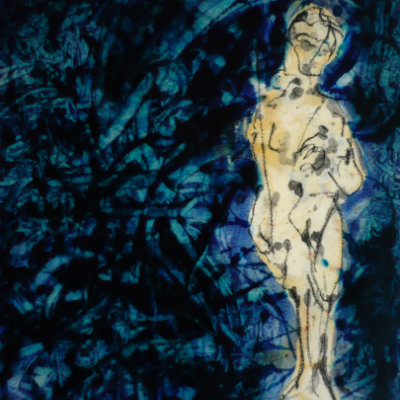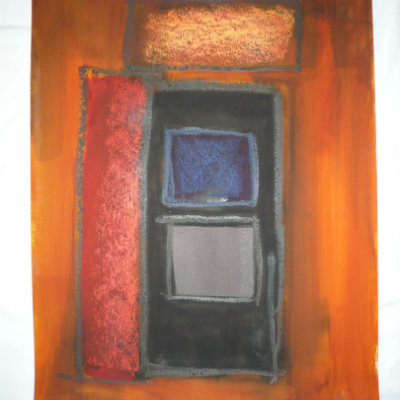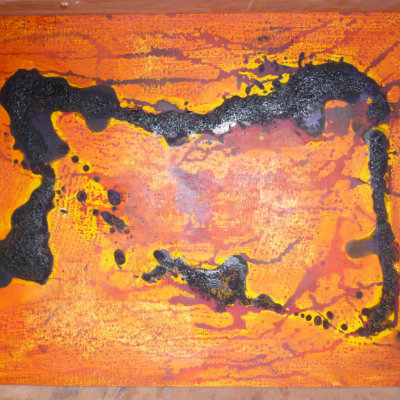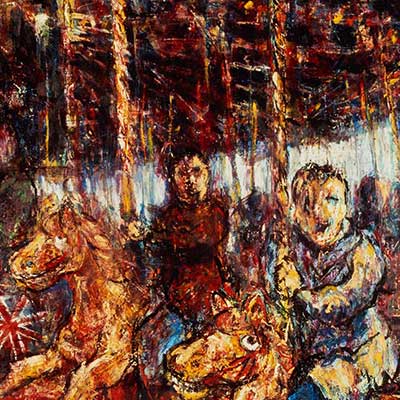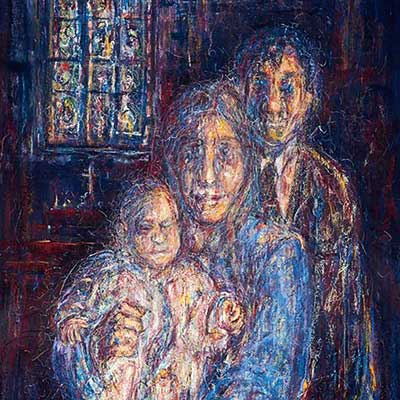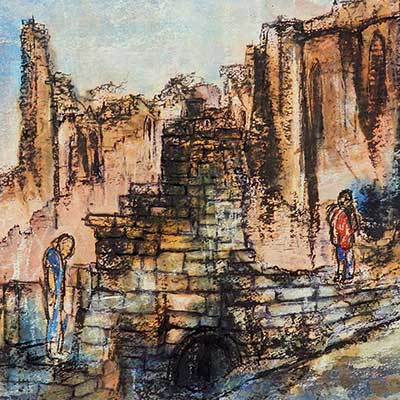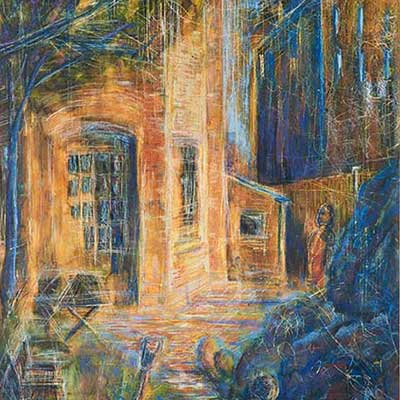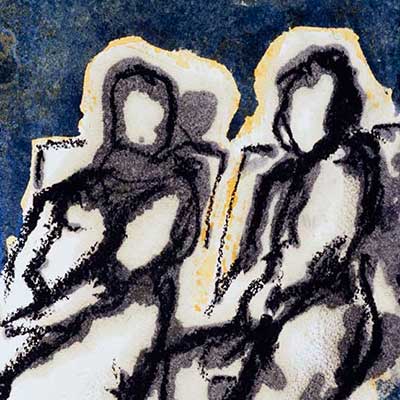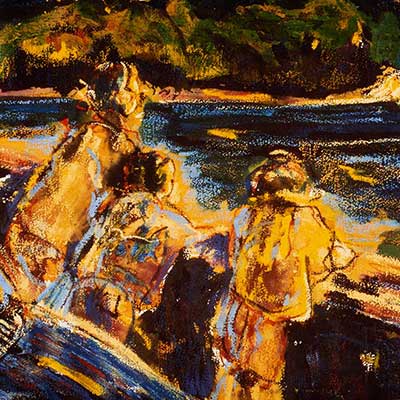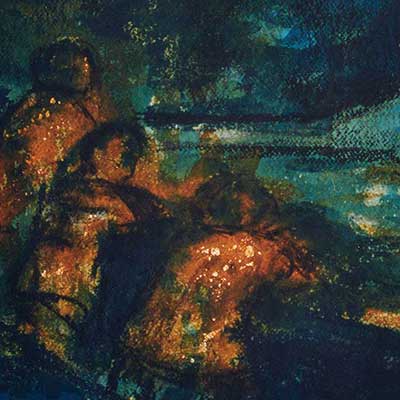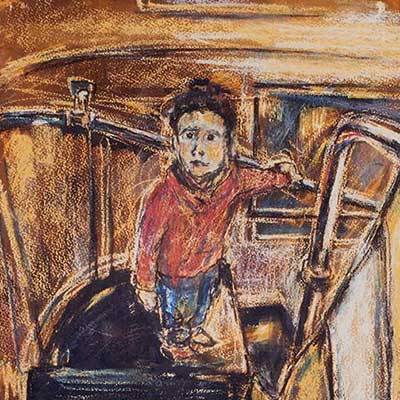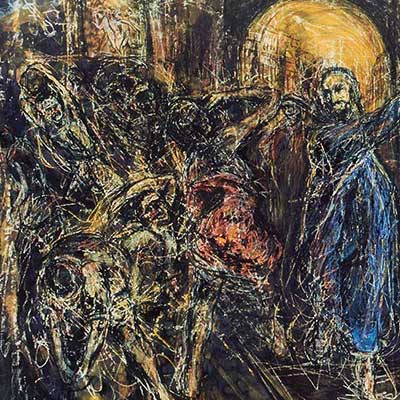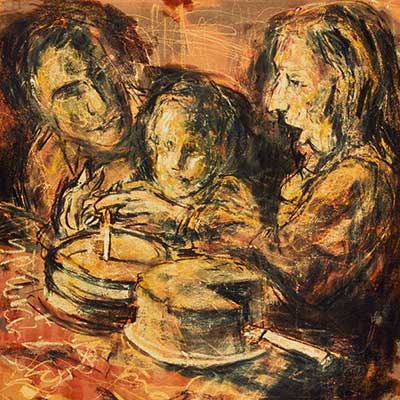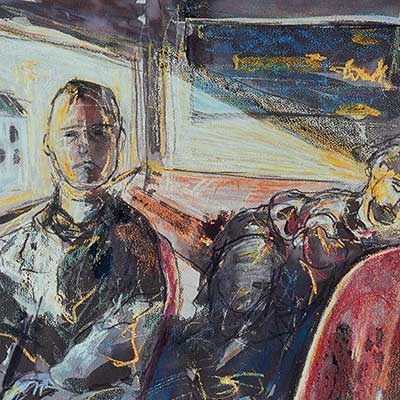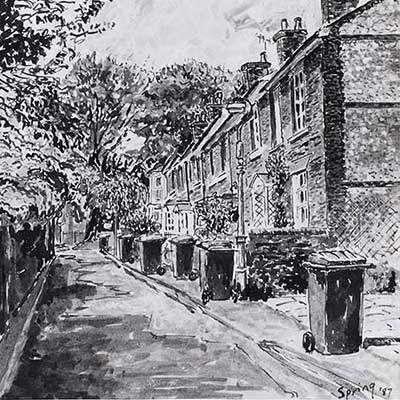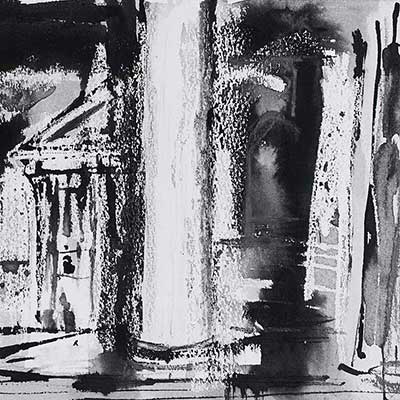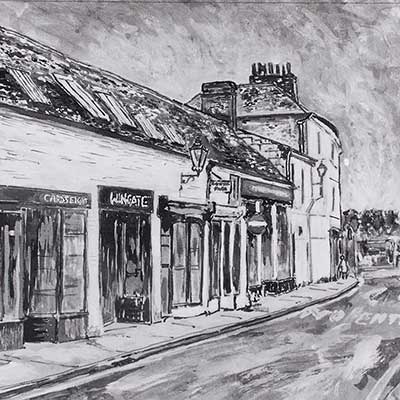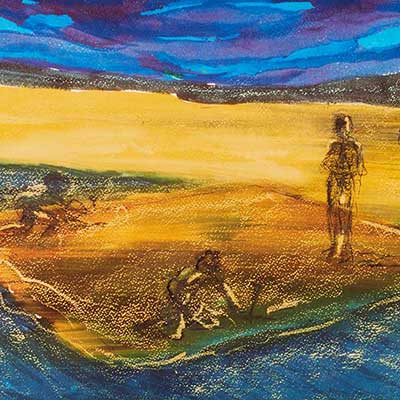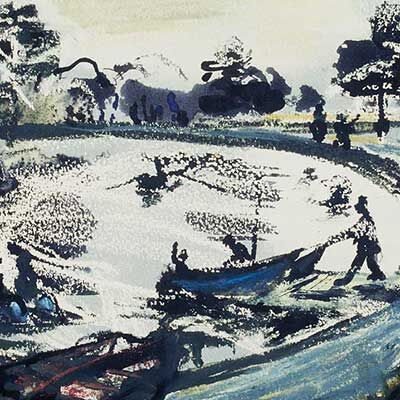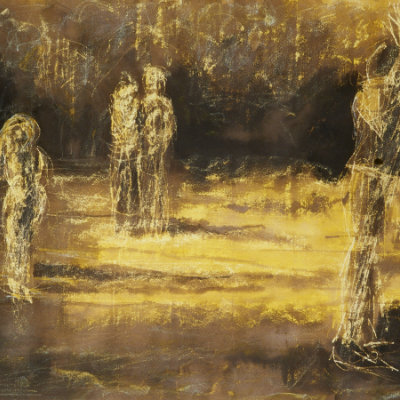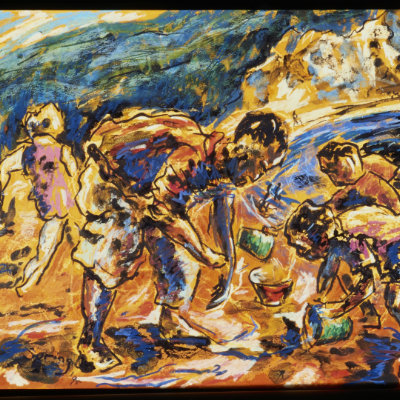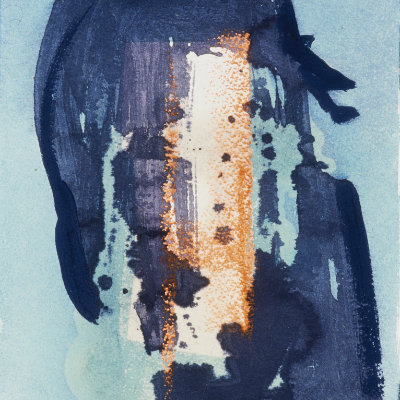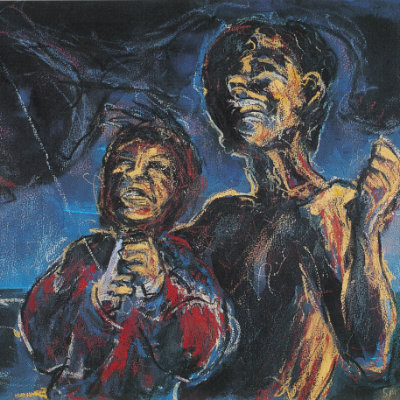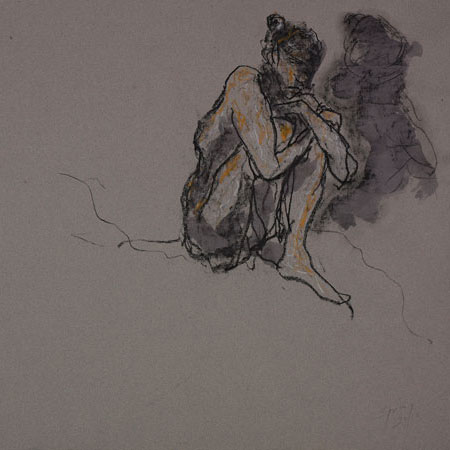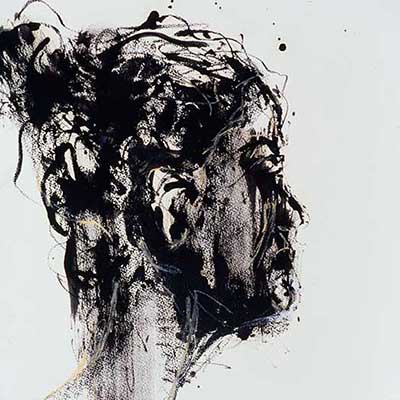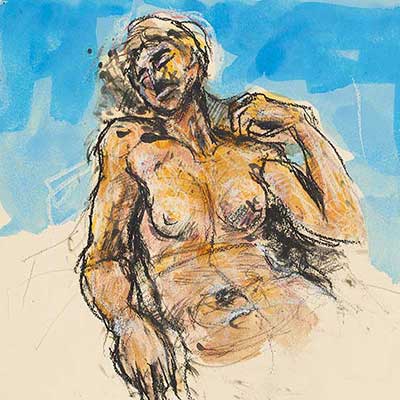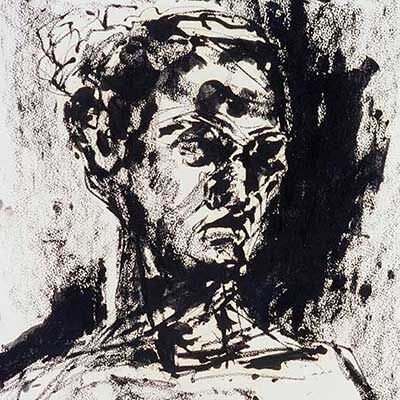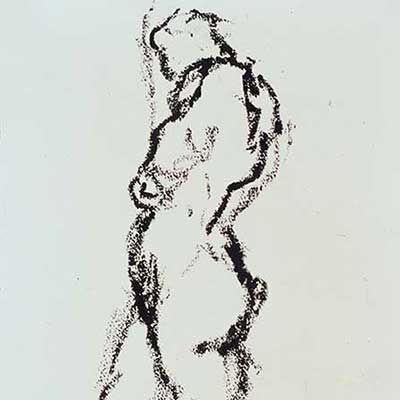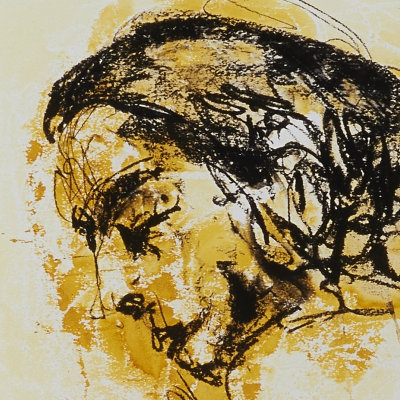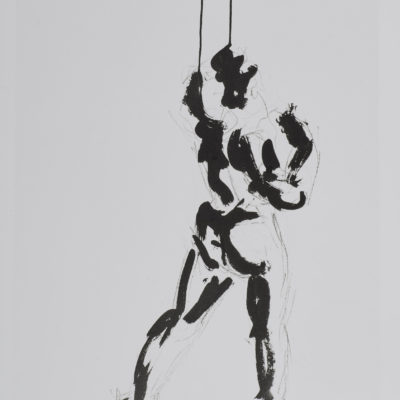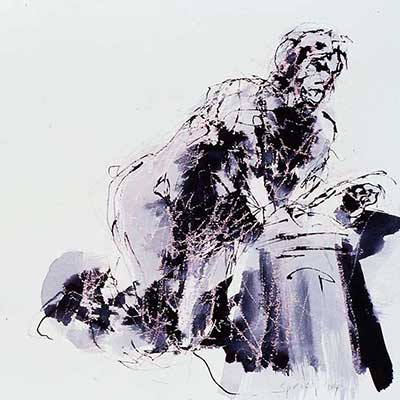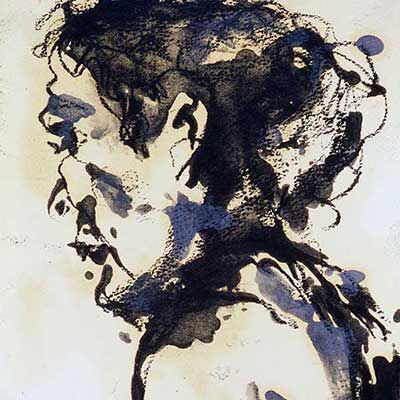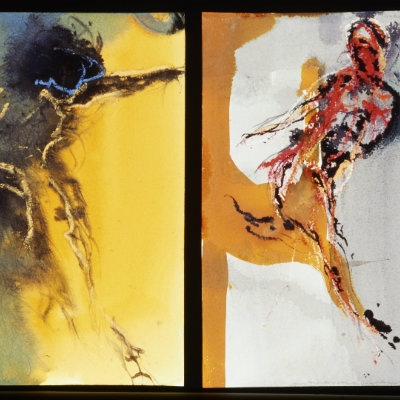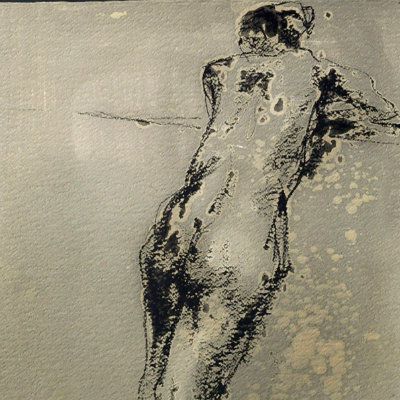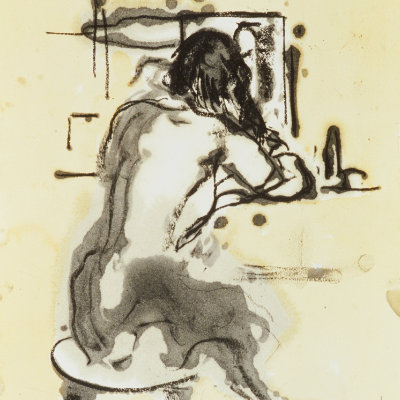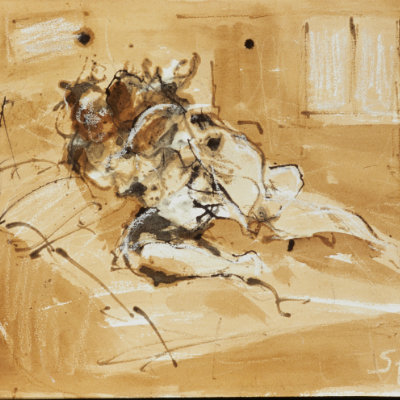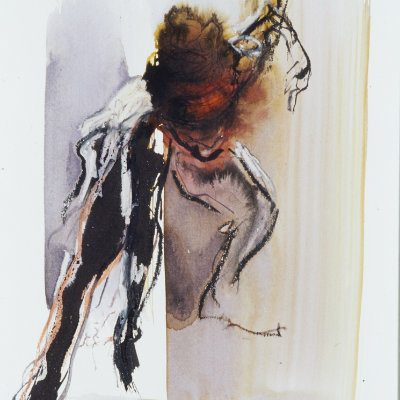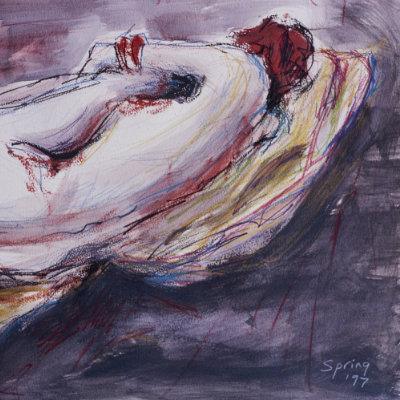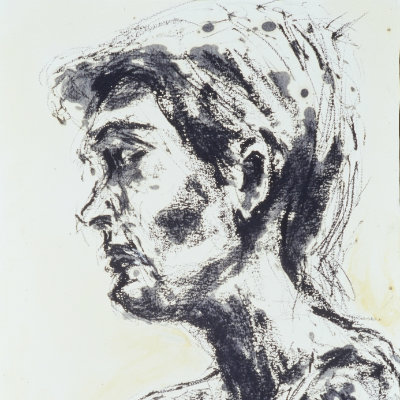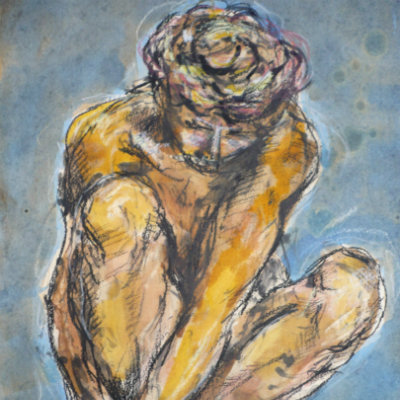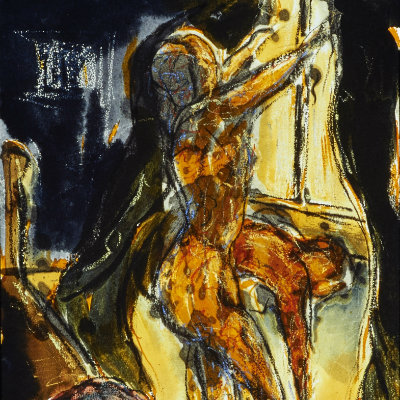Most of my current work is created on various types and gauges of paper, often using a ‘resist’ of some sort in the form of wax, oil and occasionally varnish or starch in combination with different water-based pigments. This tends to make the paper translucent and allows my colours to change subtly over time. I use the resulting relationship, in which these materials repel or embrace one another, as a basic metaphor for all human interaction. Life drawing and the human form underpins all of my art, even in those works which appear close to abstraction. I am also investigating how light sources in the form of LED panels may be framed behind my works to create what I call ‘lumographs’, as in the Fall of Granada triptych below.
I am fascinated by the relationship between oil and water, resisting and repelling one another, yet at the same time occasionally creating a union which can be extraordinarily beautiful. In the natural world they are normally kept apart, one buried deep beneath the other, but when humankind has intervened the two have sometimes been introduced to one another with disastrous consequences. As a boy I remember watching fascinated through binoculars as the oil released from the wrecked tanker Torrey Canyon was relentlessly bombed by RAF planes in an attempt to stop it spreading to the Cornish coast. It reminded me of one of those low budget horror movies in which the military is called in to attack some monster which has emerged by human agency from a lost world or from the depths of the ocean.
As an artist I try to use this interaction as a metaphor for human relationships by introducing a third element into the equation, paper, and by extending the literal meanings of ‘oil’ and ‘water’. A simple conjuring trick, shown to pupils at art classes around the world, is to draw on a blank sheet of paper with a white household candle, then introduce a wash of watercolour so that the original drawing magically appears. Hold it up to the light and you see that the structure of the paper has been transformed, making it translucent. These basic acts underpin almost all of my current work, though over the years I have refined and experimented with the three elements involved.
I often draw using a liquid element of crushed compressed charcoal dissolved in oil into which I dip a solid element – the compressed charcoal itself. In a recent series of works (Hispano-Mauresque) inspired by a residency in Morocco I have combined this technique with a coloured element derived from mixing Moroccan earth pigments with oil, into which I have made my own calligraphic marks, each back-lit by an LED screen. In so doing I have tried to explore a particular period of North African/southern European history in relation to current events on the global stage.
I use my images as a means of visiting the past and the future in search of human experiences which are both widely shared and highly personal. On a certain level the people who appear in my work may be models in the studio or members of my own friends and family. On another they are part of a human family, past, present and future, participating in a process whereby their thoughts, emotions, actions and experiences – both good and evil – are laid down, one upon the other, layer upon layer, so that they may be mined as a source of spiritual heat and light - or of discord and destruction.

